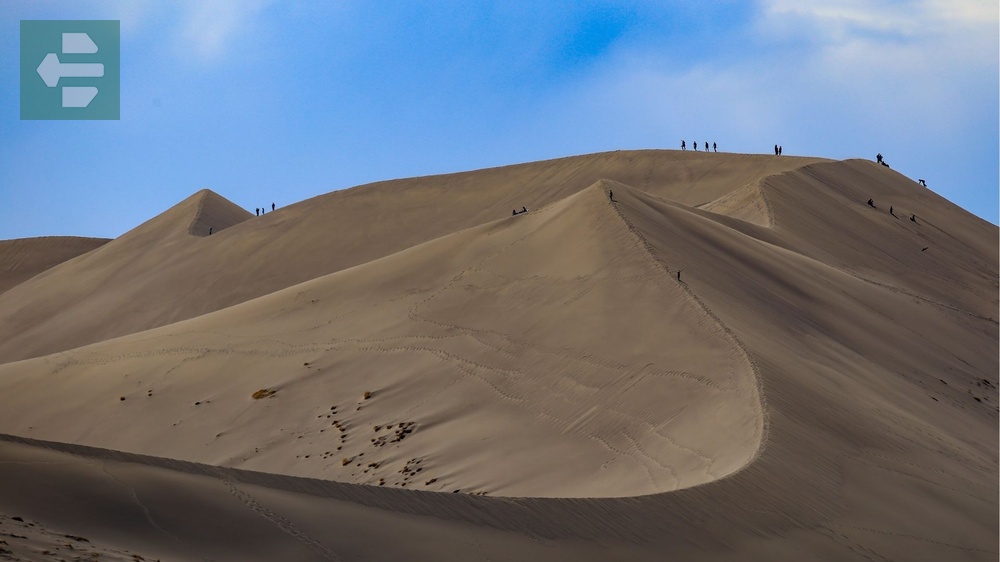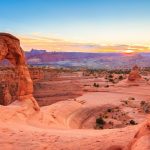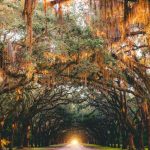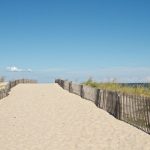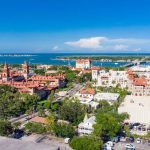Idaho offers rugged wilderness, pristine lakes, and geological wonders that rival any western state. From the jagged peaks of Sawtooth Wilderness to the ancient lava flows of Craters of the Moon, this state rewards those who venture beyond the beaten path.
Keep reading as we explore the best places to visit in Idaho that will transform your understanding of the American Northwest.
List of Contents
- 1. Sawtooth Wilderness: Where Mountains Touch Sky
- 2. Frank Church River of No Return Wilderness: America's Loneliest Place
- 3. Hell's Canyon: North America's Deepest Gorge
- 4. Craters of the Moon: Landscape from Another World
- 5. Bruneau Dunes: Desert Playground
- 6. Shoshone Falls: The Niagara of the West
- 7. City of Rocks: Natural Sculpture Garden
- 8. Hagerman Fossil Beds: Window to the Past
- 9. Bear Lake: Caribbean Blue in Mountain Country
- 10. Redfish Lake: Mirror of the Sawtooths
- 11. Stanley: Gateway to Adventure
- 12. Cascade Reservoir: High Country Water Sports
- Your Idaho Adventure Awaits
1. Sawtooth Wilderness: Where Mountains Touch Sky
The Sawtooth Range earned its name honestly. Forty-two peaks rise above 10,000 feet, their jagged silhouettes cutting through Idaho's biggest sky. Over 300 alpine lakes dot the wilderness, each one colder and clearer than the last.
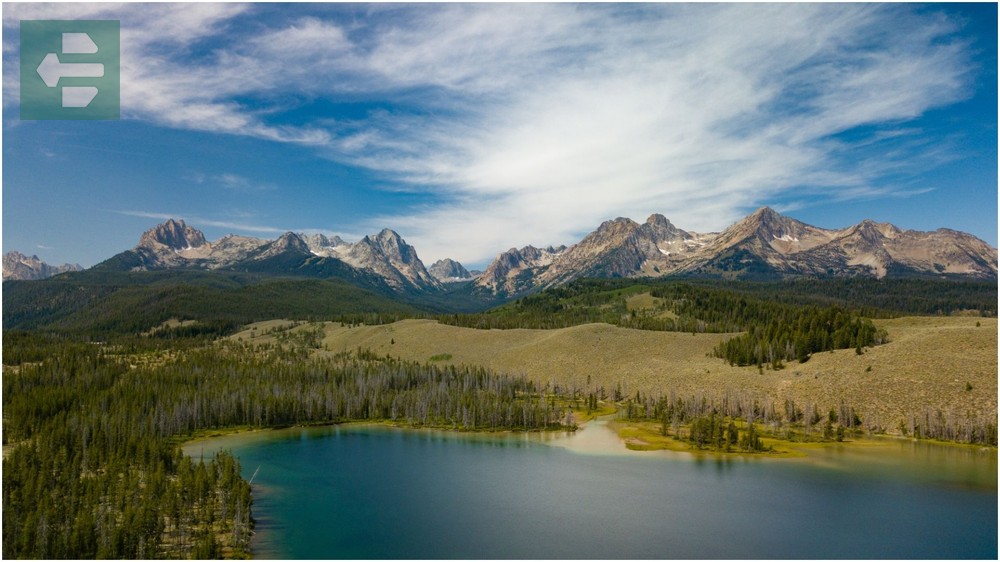
I still remember my first sunrise at Alice Lake. The granite spires caught fire in the morning light while mist rose from water so still it mirrored every peak perfectly. That moment taught me why locals call this place sacred.
The wilderness spans 217,000 acres with 350 miles of trails. Most hikers stick to the popular routes, but the real magic happens on the unmarked paths that locals have used for generations.
Quick Facts:
- Peak season: July-September
- Access: Stanley or Ketchum
- Entry fee: Free (wilderness permit required for overnight)
- Suggested stay: 3-4 days
- Key spots: Alice Lake, Sawtooth Lake, Iron Creek Trail
2. Frank Church River of No Return Wilderness: America's Loneliest Place
This is the largest wilderness in the lower 48 states—2.3 million acres where cell towers don't reach and roads don't go. The Middle Fork of the Salmon River cuts through its heart, creating some of the best whitewater in North America.
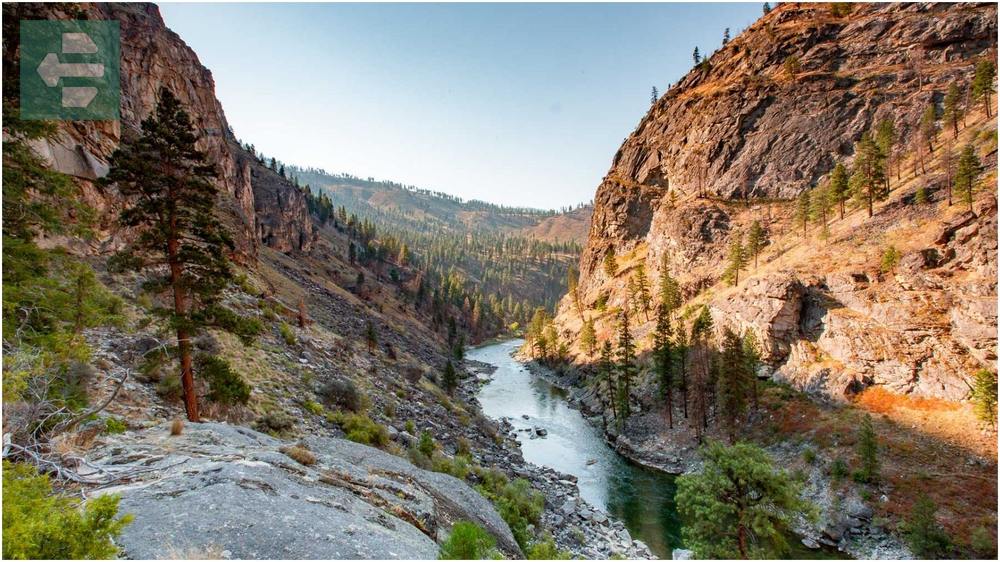
You can't drive here. You hike in, fly in, or float in. That's it. The isolation is complete and intentional.
Wildlife thrives in this untouched landscape. Mountain goats navigate impossible cliffs while eagles circle overhead. At night, the only sounds are rushing water and your own breathing.
Quick Facts:
- Peak season: June-September
- Access: Charter flights or multi-day hikes
- Entry fee: Free
- Suggested stay: 5-7 days minimum
- Key spots: Middle Fork Salmon River, Boundary Creek, Big Creek
3. Hell's Canyon: North America's Deepest Gorge
Hell's Canyon plunges 7,993 feet from rim to river—deeper than the Grand Canyon. The Snake River carved this chasm over millions of years, creating walls that stretch beyond sight.
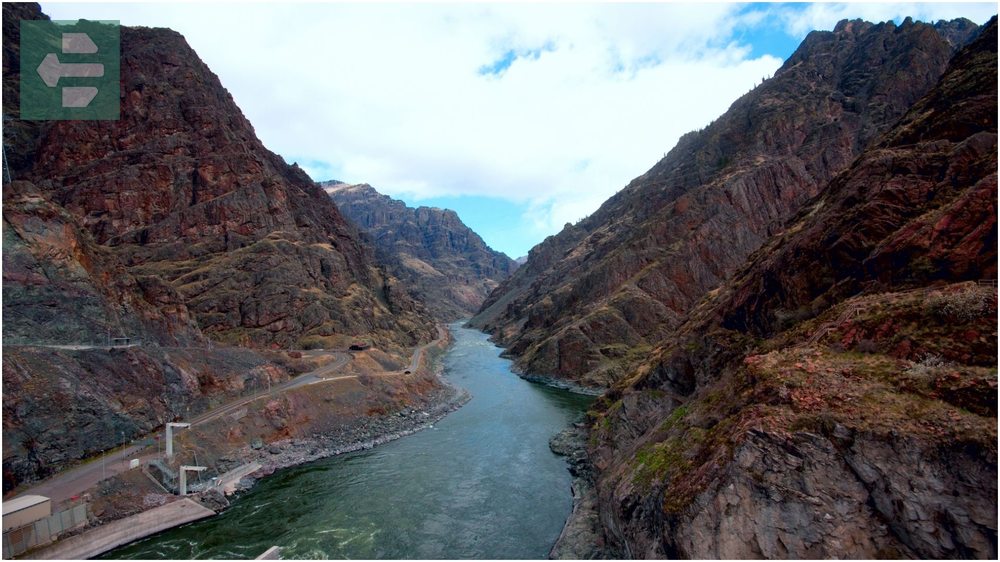
Standing on the Oregon rim, you realize how small you are. The river below looks like a silver thread, but it's actually a powerful force that continues its ancient work of cutting stone.
Jet boat tours run the rapids, but the real experience comes from hiking the canyon floor. The path is demanding, but every step reveals new layers of geological history written in rock.
Quick Facts:
- Peak season: May-October
- Access: Riggins or Lewiston
- Entry fee: From $15 per vehicle
- Suggested stay: 2-3 days
- Key spots: Hell's Canyon Dam, Seven Devils Mountains, Snake River
4. Craters of the Moon: Landscape from Another World
This isn't Earth as you know it. Black lava flows stretch to every horizon, broken only by cinder cones and twisted rock formations. NASA trained Apollo astronauts here because it resembles the lunar surface so closely.
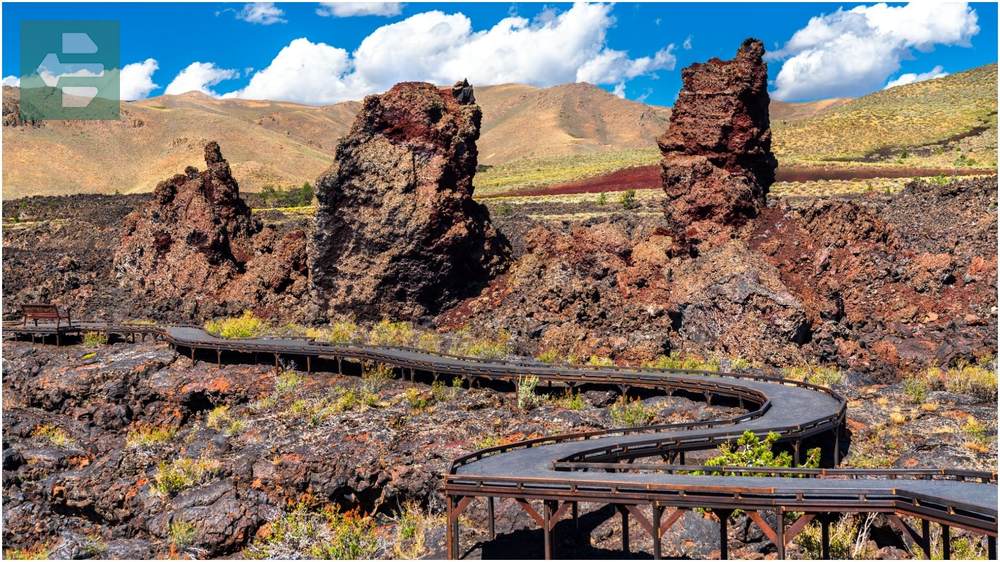
The silence is profound. No birds sing in the lava fields. No trees grow in the hardened rock. It's a landscape that forces you to confront the raw power of geological forces.
Walk the nature trails early in the morning. The black rock absorbs heat quickly, making afternoon hikes uncomfortable. Bring water—more than you think you need.
Quick Facts:
- Peak season: April-October
- Access: Highway 20/26/93
- Entry fee: From $15 per vehicle
- Suggested stay: 1-2 days
- Key spots: Spatter Cones, Tree Molds, Caves Trail
5. Bruneau Dunes: Desert Playground
The tallest single sand dune in North America rises 470 feet from the high desert floor. Wind patterns have built this massive pile of sand grain by grain over thousands of years.
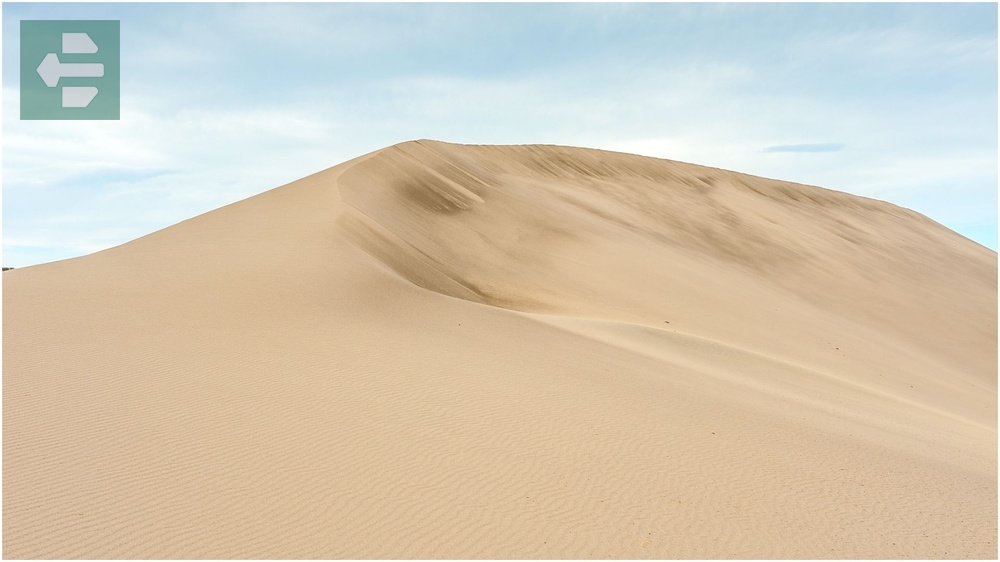
Children race down the dune's slopes while parents marvel at the engineering. Sand-boarding enthusiasts come from across the region to surf these natural waves.
At night, the dunes transform into an astronomer's paradise. Light pollution is minimal, making the Milky Way visible to the naked eye. The visitor center operates an observatory that opens the universe to curious minds.
Quick Facts:
- Peak season: March-October
- Access: Bruneau Dunes State Park
- Entry fee: From $5 per vehicle
- Suggested stay: 1-2 days
- Key spots: Main dune, small dunes, observatory
6. Shoshone Falls: The Niagara of the West
Shoshone Falls drops 212 feet over basalt cliffs, creating a thunderous display that can be heard for miles. The Snake River gathers power before this dramatic plunge, then continues its journey to the Pacific.

Spring runoff transforms the falls into a liquid wall of white water and mist. By late summer, irrigation demands reduce the flow to a trickle, but the basalt amphitheater remains impressive.
Local photographers know the best light hits the falls between 10 AM and 2 PM. The mist creates rainbows that dance across the rocks when conditions align perfectly.
Quick Facts:
- Peak season: April-June (peak flow)
- Access: Falls Avenue, Twin Falls
- Entry fee: From $5 per vehicle
- Suggested stay: Half day
- Key spots: Main viewing area, Upper Falls, Snake River Canyon
7. City of Rocks: Natural Sculpture Garden
Granite spires rise from high desert grass like ancient monuments. Wind and water carved these formations over millions of years, creating climbing routes that challenge the world's best athletes.

Pioneer wagons passed through this landscape on the California Trail. Their axle grease still marks some rocks, preserving messages from travelers who saw opportunity in the distant west.
Rock climbers come for the unique granite. The stone offers perfect friction and endless route possibilities. Even non-climbers find magic in walking among formations that seem designed by an imaginative sculptor.
Quick Facts:
- Peak season: April-October
- Access: Highway 77 south of Burley
- Entry fee: From $10 per vehicle
- Suggested stay: 2-3 days
- Key spots: Bath Rock, Bread Loaves, Morning Glory Spire
8. Hagerman Fossil Beds: Window to the Past
Three and a half million years ago, this valley teemed with ancient horses, mastodons, and saber-toothed cats. Their fossilized remains tell the story of life before ice ages changed everything.

The Hagerman Horse—Idaho's state fossil—lived here when climate and vegetation differed dramatically from today. Scientists have uncovered more than 200 species from sedimentary layers that preserve precise moments in evolutionary time.
Walking the interpretive trails, you stand where ancient creatures once grazed. The Columbia River carved through these fossil-rich deposits, exposing treasures that help scientists understand how life responds to environmental change.
Quick Facts:
- Peak season: Year-round
- Access: US Highway 30, Hagerman
- Entry fee: Free
- Suggested stay: Half day
- Key spots: Visitor center, Oregon Trail Center, fossil sites
9. Bear Lake: Caribbean Blue in Mountain Country
This 20-mile-long lake straddles the Idaho-Utah border, its turquoise waters so brilliant they seem artificial. Limestone sediments suspended in the water create the unique color that photographs can barely capture.

Local families have summered here for generations, passing down knowledge of the best fishing spots and swimming holes. The lake's famous raspberries ripen in late July, filling roadside stands with fruit that tastes like concentrated sunshine.
Water temperatures reach the mid-70s by midsummer—rare for mountain lakes. The combination of warm water and stunning color makes Bear Lake a desert oasis that defies expectations.
Quick Facts:
- Peak season: June-September
- Access: Highway 89 from Logan Canyon
- Entry fee: Various day-use fees
- Suggested stay: 2-4 days
- Key spots: Bear Lake State Park, Raspberry Days, North Beach
10. Redfish Lake: Mirror of the Sawtooths
Redfish Lake reflects the Sawtooth Mountains so perfectly that sky and peaks merge into a single image. Sockeye salmon once turned these waters red during spawning runs—hence the name—though only a few hundred return each year now.

I've watched sunrise paint these peaks gold while the lake held perfect silence. That kind of beauty changes something inside you. It reminds you why wild places matter.
The lake offers Idaho's most scenic camping, with sites that face the mountains directly. Lodge guests enjoy the same views from comfortable rooms, but tent campers get the full mountain experience when stars emerge overhead.
Quick Facts:
- Peak season: June-September
- Access: Highway 75 to Stanley, then 5 miles south
- Entry fee: Day-use from $5
- Suggested stay: 2-4 days
- Key spots: Redfish Lake Lodge, hiking trails, boat rentals
11. Stanley: Gateway to Adventure
Stanley sits at 6,260 feet elevation where the Salmon River begins its journey to the sea. Population hovers around 100 year-round, but this tiny town serves as base camp for Idaho's most spectacular wilderness adventures.

The main street feels unchanged since the mining boom ended. False-front buildings house outfitters, cafes, and gear shops that cater to adventurers heading into the backcountry.
Every direction offers a different adventure. The Sawtooth Wilderness spreads to the south, the Salmon River flows west, and forest roads lead to hot springs that few tourists discover.
Quick Facts:
- Peak season: June-October
- Access: Highway 75 (Sawtooth Scenic Byway)
- Entry fee: N/A
- Suggested stay: 2-3 days (base for longer trips)
- Key spots: Main Street, Salmon River, Sunbeam Hot Springs
12. Cascade Reservoir: High Country Water Sports
This 28-mile-long reservoir sits at 4,827 feet elevation, surrounded by forested mountains that provide endless recreation opportunities. Created in 1948, the lake has become central Idaho's premier water sports destination.

Summer brings families who water ski, wakeboard, and fish for yellow perch and rainbow trout. The water stays refreshingly cool even in July, providing relief from high desert heat.
Winter transforms Cascade into a different world. Ice fishing shanties dot the frozen surface while cross-country skiers explore surrounding forests. The contrast between seasons makes this place special year-round.
Quick Facts:
- Peak season: May-September (water sports), December-March (ice fishing)
- Access: Highway 55 north of Boise
- Entry fee: Day-use from $5
- Suggested stay: 2-3 days
- Key spots: Cascade State Park, West Mountain, Lake Fork
Your Idaho Adventure Awaits
Idaho's best places reveal themselves slowly to those willing to venture beyond interstates and tourist guides. Each location offers something different—geological wonder, wilderness solitude, or moments of unexpected beauty that lodge permanently in memory.
These destinations reward preparation and patience. Weather changes quickly in mountain country. Roads close with first snow. But for those who time their visits well and pack appropriately, Idaho delivers experiences that transform casual travelers into lifelong adventurers.
Start planning now. The mountains and lakes described here exist today much as they did centuries ago. Tomorrow, they'll wait for your footsteps on their trails, your reflection in their waters, and your stories added to the countless others they've inspired.
The best places to visit in Idaho aren't just destinations—they're invitations to discover what wild America still offers to those brave enough to accept.
